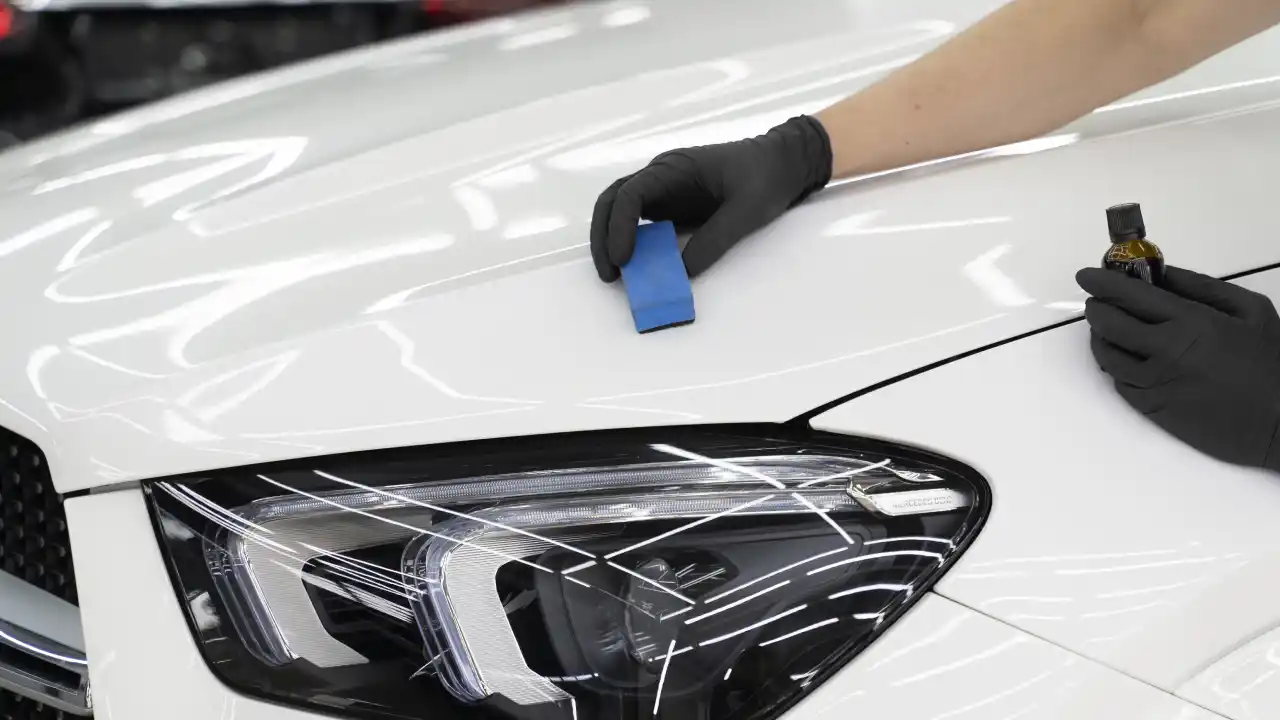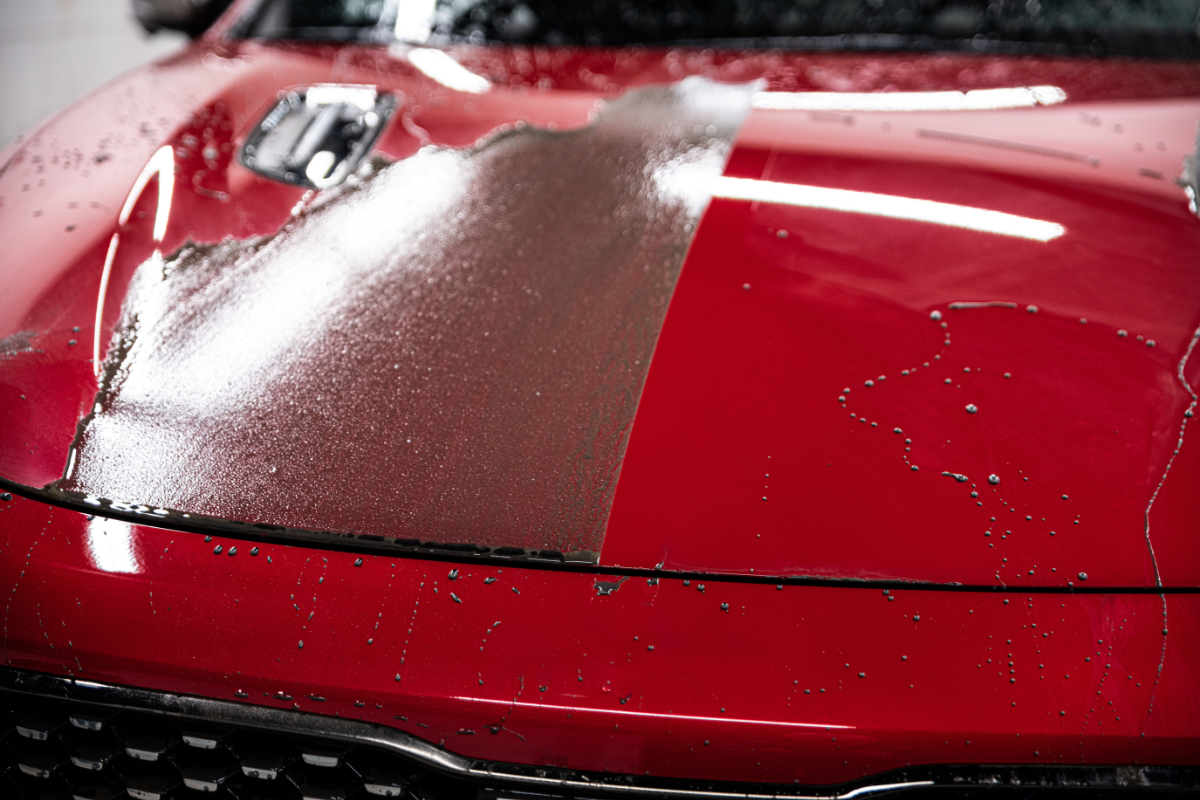The Role of Ceramic Coating in Keeping a Remarkable Complete on Your Automobile
Wiki Article
Discovering the Science Behind Ceramic Covering and Its Influence On Automobile Describing
The application of ceramic finishing in automobile outlining represents a considerable development in vehicle care, rooted in its innovative chemical residential or commercial properties, primarily silica dioxide and titanium dioxide. Comprehending the scientific research behind these materials reveals not just the protective advantages they supply however additionally their role in improving a vehicle's aesthetic durability. As we discover the complexities of the application procedure and the long-term ramifications for car upkeep, it ends up being clear that the selection of ceramic coating can essentially alter one's strategy to vehicle care. What factors to consider should be made before committing to this transformative service?What Is Ceramic Covering?
Ceramic layer is a contemporary remedy that has obtained appeal in the automobile outlining sector for its capacity to offer lasting protection for lorry surfaces. This sophisticated protective layer is generally made up of silica dioxide (SiO2), which forms a strong bond with the lorry's paint, developing a long lasting guard versus ecological contaminants. Unlike conventional wax or sealants, ceramic coverings provide superior resistance to UV rays, chemical discolorations, and physical abrasions.
The application of ceramic covering entails a precise procedure, where the car's surface area is thoroughly cleaned and decontaminated prior to the layer is applied (Ceramic Coating). As soon as cured, the finish enhances the vehicle's gloss, depth, and quality, giving a showroom-quality coating that lasts for years. One of the essential advantages of ceramic coating is its hydrophobic homes, which push back water and dirt, making maintenance simpler and reducing the regularity of washes
The Chemistry of Ceramic Covering
A basic aspect of ceramic layer lies in its chemical composition, mainly characterized by the presence of silica dioxide (SiO2) This compound is important to the formation of a resilient, protective layer that bonds chemically to the lorry's surface.In addition to SiO2, numerous ceramic finishings include titanium dioxide (TiO2) and various other ingredients to boost their efficiency attributes. TiO2, as an example, adds to enhanced hardness and chemical resistance. The interaction in between these compounds creates a special molecular framework that uses a high level of security versus environmental factors such as UV rays, acid rain, and oxidation.
Additionally, the application process frequently includes a thorough prep work of the surface area to guarantee optimum attachment of the layer. This chemistry not just makes sure a resilient coating however additionally improves the visual charm of the automobile. Understanding the elaborate chemistry behind ceramic finishings is vital for detailing specialists that aim to give premium security and long life for their clients' lorries.
Benefits of Ceramic Finishing
While describing professionals often highlight the benefits of ceramic coatings, their benefits extend much beyond aesthetics. The key benefit is superior defense versus ecological impurities. Ceramic finishings develop a hydrophobic surface that pushes back grime, dust, and water, significantly reducing the frequency of cleans and the effort required to keep an automobile's appearance. This safety layer likewise guards the paint from dangerous ultraviolet rays, protecting against oxidation and fading gradually.Moreover, ceramic layers boost the longevity of the car's surface. Unlike typical waxes or sealants, which might last a few months, ceramic coatings can withstand for many years, providing a long-term service for car care. This durability converts to cost savings, as proprietors are less likely to require constant reapplication.
Furthermore, ceramic finishes are immune to chemical click here for more spots and etching, which can happen from acidic compounds like bird droppings or tree sap. This resistance not just preserves the car's aesthetics however also minimizes potential damages - Ceramic Coating. In general, the financial investment in ceramic finishing uses auto owners a substantial return in terms of protection, convenience of upkeep, and resilient aesthetic allure, making it a progressively prominent choice in the realm of vehicle describing
Application Refine Clarified

Once the surface area is appropriately prepared, the ceramic finishing can be used. Using an applicator pad, the service technician applies the covering in little sections, functioning in a crosshatch pattern to make certain also insurance coverage.
As soon as healed, the ceramic covering creates a strong bond with the paint, offering enhanced protection and a glossy coating. Appropriate application is crucial to maximize the long life and performance of the ceramic finish.

Long-term Influence On Lorry Treatment
The long-term effect of ceramic covering on vehicle care is substantial, as it essentially modifies just how proprietors preserve their vehicles. By producing a resilient, hydrophobic layer on the automobile's surface, ceramic layers minimize the adherence of dust, gunk, and pollutants. This residential or commercial property minimizes the regularity of washing required, eventually conserving water and cleansing items.In Addition, the UV security used by ceramic finishes aids to avoid oxidation and fading of the vehicle's paint, maintaining its visual allure and resale value gradually - Ceramic Coating. This protective obstacle likewise reduces the likelihood of scrapes and swirl marks, which are common issues in conventional paint surfaces
Furthermore, ceramic coverings help with simpler upkeep, permitting proprietors to clean their vehicles with marginal effort. The smooth surface area makes it tough for contaminants to bond, allowing less complex removal throughout routine cleansing.
In the long run, the investment in ceramic coating may cause cost savings in automobile treatment product or services. Overall, the enduring advantages of ceramic coverings not only improve the look of lorries but additionally add to an extra reliable and sustainable method to automobile maintenance.
Conclusion
Finally, the application of ceramic finish stands for a considerable development in auto outlining, driven by its unique chemical make-up of silica dioxide and titanium dioxide. This technology not just improves the visual appeal of vehicles but likewise provides durable security versus ecological threats and put on. The long-term advantages, consisting of minimized maintenance regularity and improved toughness, highlight the worth of ceramic coverings as an essential investment from this source for maintaining vehicle appearance and integrity in time.
Report this wiki page